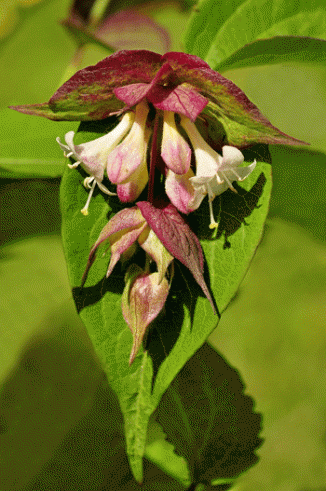This is a tall (2 metres), deciduous shrub which has escaped into the wild and now is found in hedgerows, woodland and roadsides. It has pale pink-purple, funnel-shaped flowers (10-20mm), each flower having a long stigma and 5 shorter stamens. The inflorescences, which are drooping spikes, are in whorls in the axis of larger, distinctive maroon bracts and are borne on woody, red stems, blooming from July to September. The leaves are large, opposite, lanceolate and red-stemmed. It is an introduced shrub, scattered in the East and S East mainly. This plant belongs to the Caprifoliaceae or Honeysuckle family.
I first saw this shrub in Kilmeaden, Co Waterford in 2010 and photographed it in 2013 in Gibletstown, Co Wexford.
If you are satisfied you have correctly identified this plant, please submit your sighting to the National Biodiversity Data Centre




